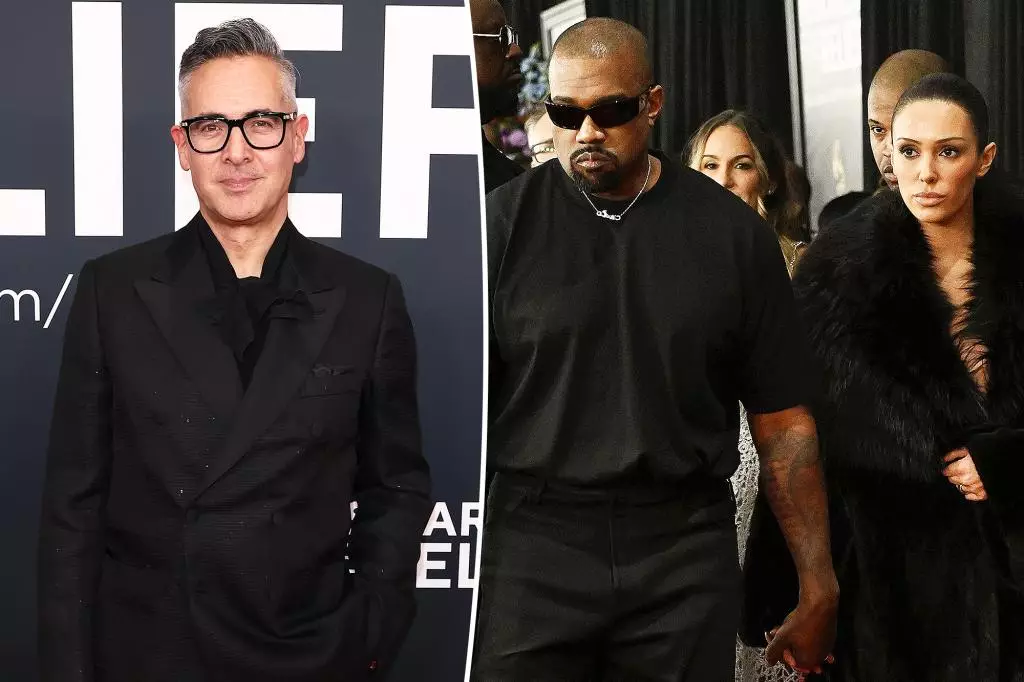The 2025 Grammys, a night celebrating the best in the music industry, became a hotbed for scrutiny not just of performances and nominations but also sartorial choices. Executive producer Raj Kapoor articulated concerns regarding the event’s dress code, suggesting there are established “standards” for attire at the prestigious awards show. Despite this, the arrival of Kanye West and Bianca Censori on the red carpet stirred considerable debate, particularly given that their outfits seemingly defied conventional expectations.
Kapoor highlighted that while the Grammys promote an “artistic black-tie” dress code, interpretations may vary widely within the bohemian music scene. This duality reflects a complex interplay between artistic expression and societal expectations. In a sector known for pushing boundaries, the divergences in understanding these “standards” can lead to confusion, especially among high-profile attendees. While some musicians have opted for extravagant and avant-garde looks that challenge traditional norms, the line between creativity and propriety appears blurred.
West’s notable nomination for Best Rap Song added to the discourse surrounding attire. Kapoor’s comments seem to imply that those performing or highly recognized at the event should adhere to a stricter dress code than attendees without such accolades. However, this raises questions about whether celebrity status should determine the level of decorum expected. The implications are profound; while art often thrives on rebellion, certain platforms, particularly those steeped in tradition like the Grammys, necessitate a discussion about where to draw the line.
The Recording Academy’s lack of clear communication regarding its dress rules has left attendees in the lurch, historically leading to incidents that challenge the boundaries of acceptable attire. CBS’s wardrobe advisory from 2013 underscored expectations regarding coverage of “buttocks and female breasts.” This document, while aimed at maintaining a level of decorum, also highlights the evolving nature of fashion norms at high-profile gatherings.
Despite these guidelines, Censori’s outfit—a sheer minidress that barely clung to the boundaries of the dress code—became a focal point of criticism. Her choice to forgo undergarments entirely and to reveal the contours of her body was a bold statement that, while perhaps artistically stimulating, clearly contradicted earlier advisory notes highlighting what is deemed appropriate.
The couple’s evident desire to generate buzz was palpable as they walked the red carpet, with reports suggesting they aimed to emulate the provocative imagery found on the cover of West’s “Vultures 1” album, where Censori posed wearing minimal clothing. This raises intriguing questions about the underlying motivations behind such sartorial decisions. For many in the industry, attention—regardless of its nature—is a commodity, and both good and bad publicity can reinforce their brands.
Sources indicated that Censori embraces this kind of focus, emphasizing that she thrives on the spotlight. This brings to light an essential aspect of celebrity culture: the acceptance of constructed personas that often walk the fine line between artistic expression and social responsibility. While there’s an undeniable allure in being the center of conversation, it’s vital to consider the potential repercussions of such displays.
The public reaction to Censori’s attire exemplifies the dissonance between audience expectations and the artist’s vision. While some fans may champion bold self-expression, others perceive such attire as a brazen disregard for established norms. This duality reflects the broader societal discourse about body image, modesty, and the definition of “appropriateness” in contemporary culture.
The events at the 2025 Grammys serve as a multifaceted case study of how fashion interacts with the expectations placed upon artists and those within the industry. With Raj Kapoor’s remarks effectively highlighting a dispute between tradition and winged expression, the incident invites further exploration into the impact of personal style, branding, and societal norms within the artistic landscape. As the lines continue to blur, the conversation surrounding dress code standards will undoubtedly evolve, showcasing the ever-changing nature of the industry itself.

